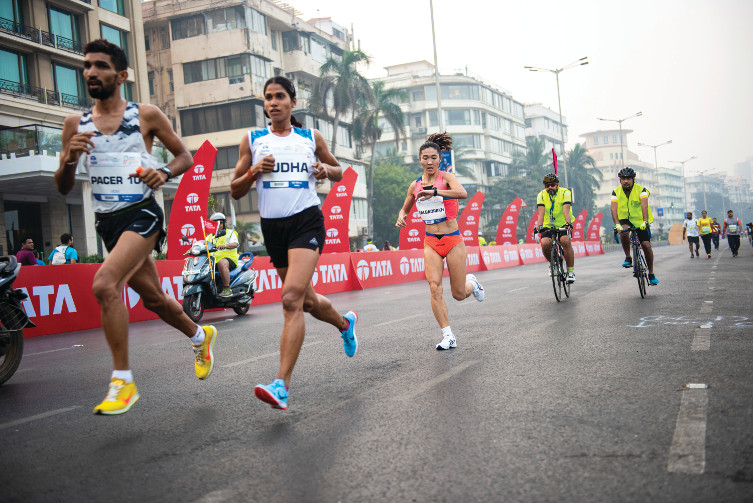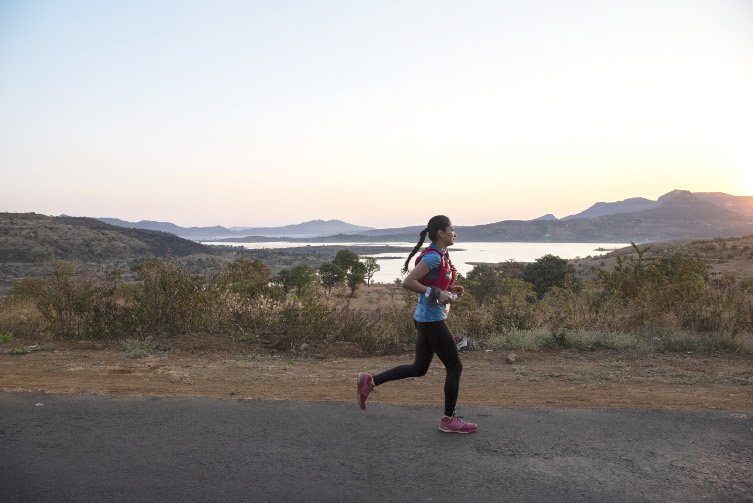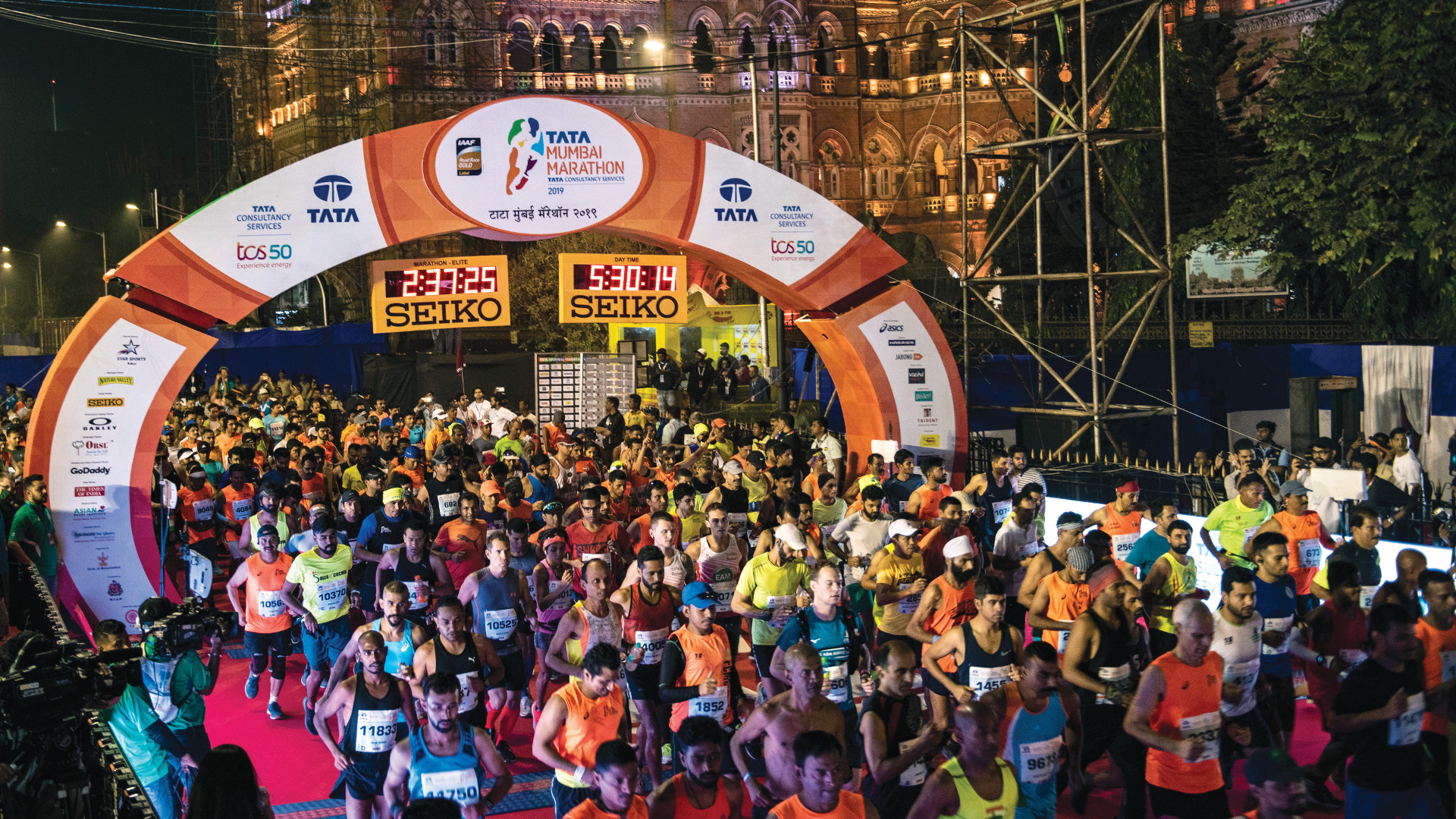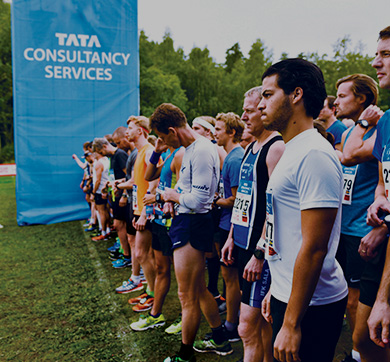March 2019 | 1789 words | 7-minute read
The House of Tata was always destined to shape the health and fitness movement in India. Ever since group Founder Jamsetji Tata wrote to his son, Sir Dorab, to “reserve large areas for football, hockey and parks” in his instructions to build a township that would one day be Jamshedpur, the Tata story has been steadfastly intertwined with India’s sports journey.
After promoting sports like cricket, football, hockey, badminton, chess, athletics, mountaineering and motor racing, producing award-winning sportspersons, helping the development of marginal communities through sport, and supporting national and international events as well as training academies, it was only a matter of time before the Tata group spurred on the running revolution in the country, through events like the Tata Mumbai Marathon and Tata Ultra Marathon.
Bigger…
Tata Consultancy Services (which is the sponsor of premier global marathons in New York and Amsterdam, among others) had already been associated with the Mumbai Marathon for years before the Tata group became the title sponsor for Asia’s largest running event, the Tata Mumbai Marathon, in 2017.
On the occasion of the sponsorship announcement in August 2017, N Chandrasekaran, Chairman, Tata Sons, stated, “Partnering with India’s premier long-distance running event is a great way for the Tata group to increase our engagement with the community, raise funds for charity as well as create societal awareness about the necessity of good health and fitness.”

In the second year since the partnership was initiated, it’s clear the event has surpassed those expectations. More than 46,000 runners (including 3,192 Tata employees) took to Mumbai’s streets at the crack of dawn on January 20 this year — up from 44,000 people the previous year — and even on the charity front, Tata Mumbai Marathon is set to shatter its own records.
The event has already raised more than 32 crore (up to pre-race day) towards NGOs who support various causes. Finally, as Harish Bhat, Brand Custodian, Tata Sons, adds, “The marathon has become one of the most talked about and eagerly awaited events in Mumbai — it is not just a race anymore, it is a city-wide celebration of running and fitness.
Better…
When the Tata group assumed title sponsorship of the marathon in 2017, race promoter Procam International took to the streets to ask runners what motivated them to run. Vivek Singh, MD, Procam International, shares, “The answers were varied: health and fitness, charity, ‘because I’m inspired by Chandra sir’, ‘because Anil Ambani and I run on the same road’. We then asked them why they ran the second time, the third, the seventh or the eighth. That’s when they looked inward and the overwhelming response was: ‘because it makes us better’.”
That insight drove the campaign to #BeBetter — not as a diktat or a command, as Singh is quick to clarify. “It just inspires you to be better. Whether you’re a runner, a supporter, a fundraiser, a spectator, if you are connected in any way to the marathon, it makes you better — a better father, mother, daughter, son, colleague, friend, boss,” says Singh.
Perhaps there is no bigger indication of the impact of ‘Inspire To Be Better’ than the increase in runners who signed up for the full marathon. The Gold Label marathon (the Tata Mumbai Marathon was accorded the honour by the International Association of Athletics Federations (IAAF) for the first time this year, making it the only one of its kind in India) has six race categories: the Full Marathon (42.195km), Half Marathon (21.097km), Dream Run (6.6km), Senior Citizens Race (4.7km), Champions with Disability category (2.1km) and a newly added Open 10K run.
This year, there was a 21 percent increase in full marathoners while the number of participants for the 10K timed run reduced. “This means that the marathon inspired people to challenge themselves, to better their own records and limits,” says Bhat.
The increase could largely be attributed to the ‘Mumkin Hai – Run For The Full’ campaign launched in July 2018, wherein organisers tied up with Striders (the pan-India fitness training group) to encourage runners who might usually run the 10K or the Half Marathon, to challenge themselves by running the Full Marathon.

Stronger…
Whether it’s through taking on the full marathon or the more challenging landscape of the Tata Ultra Marathon, it’s clear that Mumbai’s — and in fact, India’s — relationship with fitness and health has strengthened over the years. And it’s likely these running events have had a large role to play in the process.
“The sheer number of people who are active today, through running, cycling, trekking, gym memberships, is all thanks to the Mumbai Marathon,” says Singh. “It has single-handedly inspired a get fit, get active revolution in this country.”
Adding to its appeal is the fact that running has always been an accessible, inclusive sport. “Everyone can participate; all you need is a pair of sneakers and the road ahead of you, along with the determination to run,” says Bhat. “Events such as the Tata Mumbai Marathon and the Tata Ultra Marathon just bring out the runner who is embedded deep within so many of us.”
The Tata Ultra Marathon, India’s first and only certified Ultra Marathon, with race categories of 35km and 50km, is certainly not for the weak-hearted. “It is truly an endurance sport that tests the limits of a runner’s fitness and perseverance, and is an event for true connoisseurs of the sport of running,” says Bhat. Still, the race, which weaves through the scenic Sahyadris in Lonavala and challenges runners with ascents and descents on an undulating terrain, has also witnessed an uptick in the number of runners.
A total of 812 runners (378 in the 50km and 484 in the 35km) participated at the event on February 24 this year, with a large number of the participants falling into the 45 years and above age group.
This increase in the number of people participating in the Tata Mumbai Marathon and the Tata Ultra Marathon indicates an active interest in fitness and health, with runners training over the course of the year as they prepare for their big day.
“Running a marathon promotes positive values such as perseverance, belief, commitment and excellence, which have been a key part of the Tata group’s ethos since our inception, 151 years ago,” says Bhat. “Most importantly, running a marathon becomes an aspiration for so many people and, in the course of fulfilling that aspiration, we become healthier and fitter through the positive addiction to running, which we inevitably develop.”
Highlights:
Going Green
Though ensuring the Tata Mumbai Marathon is a green, fully waste-managed event has always been a constant endeavour, this year, for the first time ever, the Municipal Corporation of Greater Mumbai partnered with the event to work closely in the execution and last mile disposal of all the waste generated on-course, the holding area and the event expo.
“Tata’s responsibility towards the planet and community also extends towards making sure that our activities don’t add trash and junk to the city we are in,” says Bhat.
Apart from 100 percent waste management, some of the initiatives included:

- Serving water only in biodegradable glasses at the Tata and Procam marquees and holding areas
- Providing water on the race route in both biodegradable cups and plastic bottles, and encouraging runners to bring their own bottles for refill
- Using greener signages made with cloth to reduce flex signage, and upcycling flexes wherever these were used
- Arranging early local train services and providing bus services for runners, as well as encouraging carpools to reduce vehicles on the road
- Ensuring all collateral provided to runners was environment friendly, starting with cloth sling bags instead of plastic, refreshments in recyclable cardboard boxes, online entry forms and paper handbooks
Women Take The Lead
Event ambassador and record-holding six-time boxing champion, MC Mary Kom, embodies the grit, perseverance and endurance associated with the Tata Mumbai Marathon. “She’s an icon that never rested on her laurels, never stopped after the first, second or third titles,” says Singh. “She continued on her path, and that has made her a symbol of inspiration.”
Also inspiring was the rise in the number of women runners in this year’s Tata Mumbai Marathon. “Women across the country have taken to running in a way that did not exist 10 years ago. At best, the few women participants came to the marathon and walked, but now, they leave the men behind with dust on their shoes,” says Singh. In fact, this year’s marathon witnessed the highest number of women participants ever — 35 percent — and at the Tata Ultra Marathon, 107 women hit the track, as opposed to just 40 last year.
Good For The Sole
In line with the #BeBetter initiative, and as part of its continuing commitment to give back to the community, the Tata group launched the ‘Better Soles’ campaign. Through Better Soles, Tata set up a platform where individuals could gift a pair of shoes to those in need by visiting the website bettersoles.tatacliq.com. Shoes were listed at prices as low as RS299, and all gifted shoes were distributed to those in need through NGO partners.
“The thought behind this initiative was that by gifting a pair of shoes, we can improve the quality of life of recipients by helping them run that extra mile — whether it is to earn their livelihood or experience the sheer joy of running,” says Bhat. “This year, in the very first year of this campaign, we have received several hundred shoes which citizens across India have gifted through this platform. As a small token of appreciation, a pair of gold coloured shoe laces is being sent to those who have gifted shoes.”
Tech Trends
The new, vibrant Tata Mumbai Marathon 2019 mobile app created by Tata Consultancy Services had some exciting features this year to make the event more memorable for runners and their supporters. Some of the best tweaks on the app (that had almost 19,000 downloads) were:
- A tracking feature to monitor runners’ progress live throughout the race using just the bib number
- A leader board to display the top 5 male and female participants each, at every split, as well as a dashboard to track the distance run by these participants
- A display of current and past results
- Race info like distance, start time, location and eligibility, as well as info from the expo to be held before the main event
— Anuradha Anupkumar



